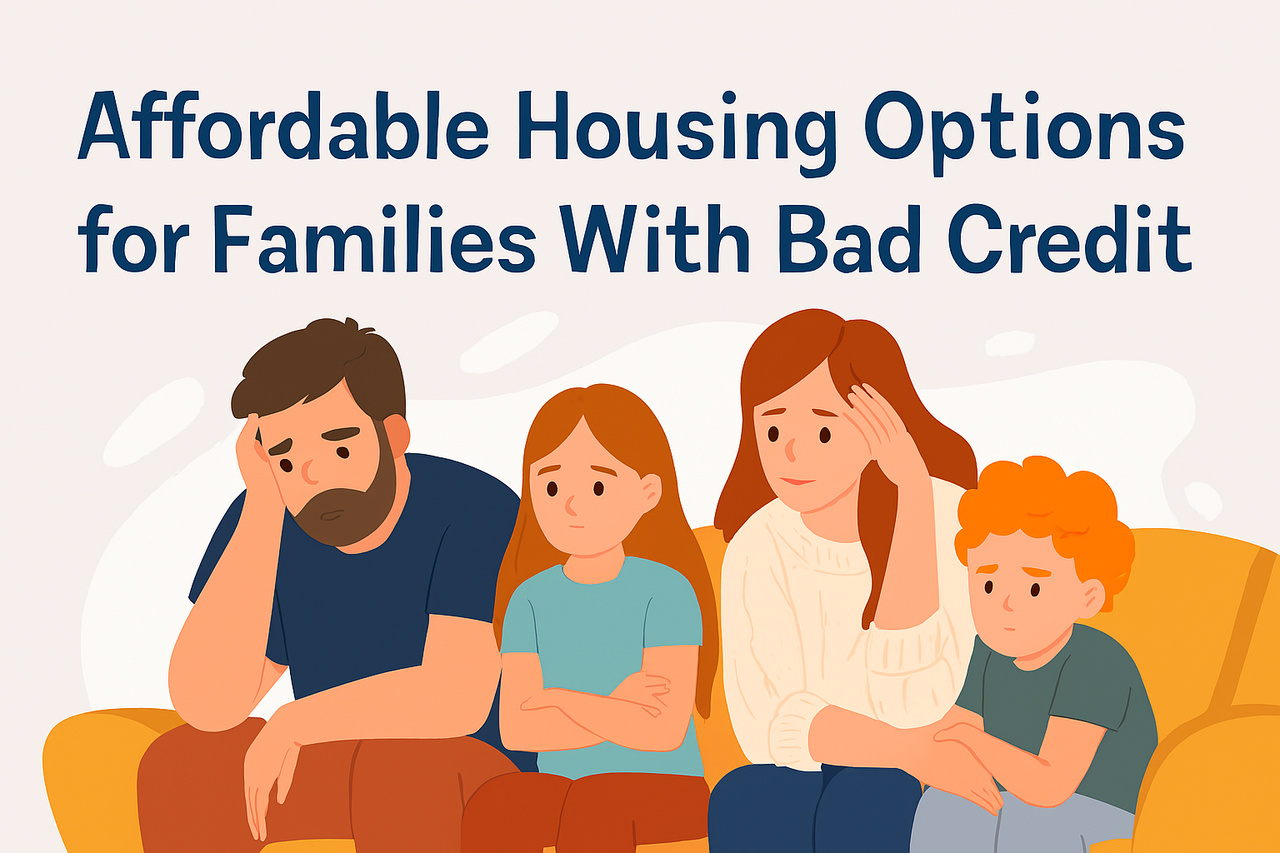Bad credit can feel like a locked door, especially when you’re trying to secure housing for your family. Missed payments, medical debt, or past evictions often follow renters for years, making landlords hesitant and applications more stressful than they need to be. But having poor credit doesn’t mean you’re out of options. Across the U.S., there are housing programs and strategies designed to help families rebuild stability, even when their credit history isn’t perfect.
Here’s a breakdown of affordable housing paths that may be available to families with bad credit and how to start navigating them.
Public Housing Through Local Housing Authorities
Public housing is one of the most accessible options for families with low income and credit challenges. These properties are owned and managed by local Public Housing Agencies (PHAs) and offer rent based on income, not credit scores. While background checks are common, many PHAs focus more on rental history and household need than on credit reports.
To apply, contact your local housing authority directly. You’ll need to provide income documentation, household details, and identification. Waitlists can be long in some areas, but applying early and checking multiple jurisdictions may improve your chances.
You can find your local PHA through HUD’s official directory.
Section 8 Housing Choice Vouchers
Section 8 vouchers allow families to rent in the private market with government assistance. The voucher covers a portion of the rent, and tenants pay the rest—typically around 30 percent of their income. While landlords do conduct their own screenings, many accept Section 8 applicants with less-than-perfect credit, especially if the voucher guarantees consistent payments.
The key is finding a landlord who participates in the program and is open to working with families who are rebuilding their financial profile. Some housing authorities offer lists of participating landlords or partner with nonprofits that help match tenants to available units.
Applications are submitted through your local housing authority, and eligibility is based on income, household size, and housing need.
Low-Income Housing Tax Credit (LIHTC) Properties
LIHTC properties are privately owned but receive federal tax incentives to offer below-market rent to low-income tenants. These developments are required to reserve a portion of units for qualifying families, and many do not use credit scores as a primary screening tool.
Instead, they focus on income verification and rental history. Some properties may still run credit checks, but they often weigh them against other factors. LIHTC units are available in nearly every state, and you can search for them through your local housing agency or nonprofit housing directories.
More details are available through Homebuyer Wallet’s housing guide.
Second-Chance Rental Programs
Some organizations specialize in helping families with poor credit, past evictions, or broken leases find housing. These “second-chance” programs work with landlords who are open to applicants with challenging histories. They may offer rental guarantor services, case management, or access to curated property lists.
For example, Ways2Rent connects renters with private owners and apartment managers who accept applicants with bad credit or prior rental issues. They also offer support with lease negotiation and application preparation.
While some second-chance services charge fees, they can be useful for families who’ve been repeatedly denied and need help navigating the process.
Private Rentals with Individual Landlords
Not all affordable housing comes through formal programs. Some private landlords are more flexible than large property management companies. They may skip credit checks entirely or be willing to accept higher deposits, co-signers, or proof of stable income in place of a strong credit score.
Searching local classifieds, community boards, or social media housing groups may uncover listings from individual owners. When reaching out, be upfront about your situation and offer references, pay stubs, or letters of recommendation to build trust.
Bad credit doesn’t define your family’s future, and it doesn’t have to block your path to stable housing. From public programs to second-chance rentals, there are options designed to meet families where they are, not where their credit score says they should be.
The process may take persistence. Applications can be slow, and not every landlord will be flexible. But with the right strategy and support, families can find housing that’s safe, affordable, and within reach.


Leave a Reply